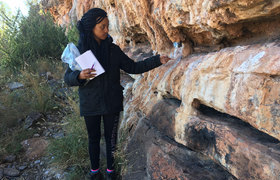Women’s Month: Women, step up to uncover Africa’s fossil heritage
19 August 2021 | Story Helen Swingler. Read time 7 min.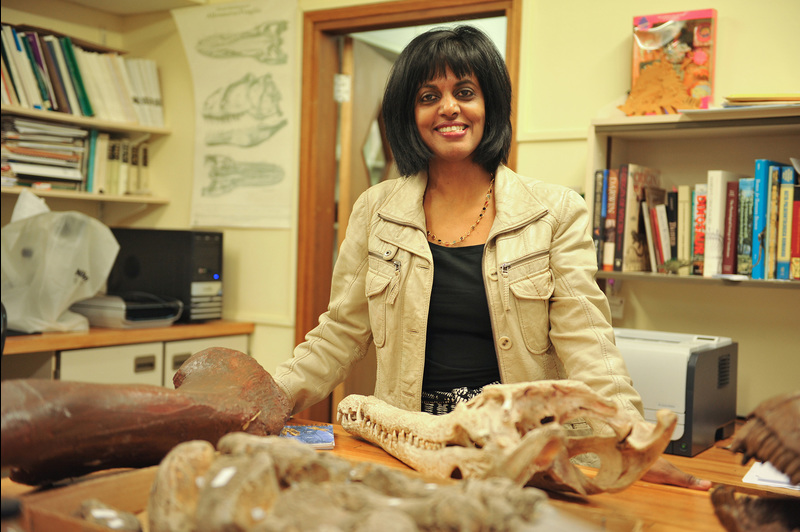
Africa is rich in dinosaur fossils but more scientists and fieldworkers are needed to uncover this “fabulous heritage”, especially women who are still too scarce in the field, said University of Cape Town (UCT) palaeobiologist Professor Anusuya Chinsamy‑Turan. And like other scientific fields, this status must change.
Professor Chinsamy‑Turan (Department of Biological Sciences) is a world‑leading expert in the microscopic study of dinosaur bones. The National Research Foundation A‑rated scientist was speaking at a popular talk, ‘Dinosaurs of Africa’, hosted by the Academy of Science of South Africa (ASSAf) to mark National Science Week from 2 to 7 August.
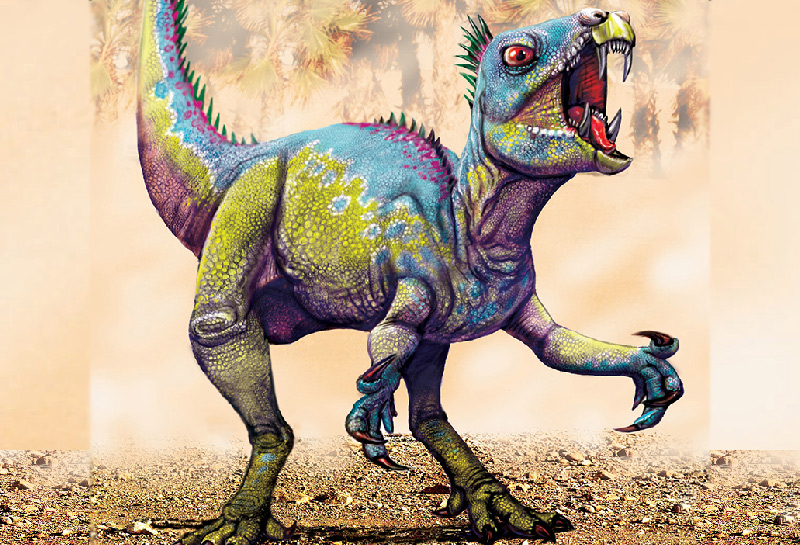
“A lot of [excavation] work has been going on in North Africa but not everywhere [in Africa] has been explored, especially not in Southern Africa,” she said.
A former chair of the Association of South African Women in Science and Engineering, Chinsamy‑Turan understands the restrictions and prejudices women face, particularly in male‑dominated fields such as palaeontology and archaeology.
Gender and race imbalances
However, it’s often the logistics and dangers attached to women undertaking fieldwork alone in remote areas that restrict their growth and development in the field.
“Safety is a big concern. Usually when we go into the field, we try having a big group of men and women. And, yes, palaeontology is still a very male‑dominated field in South Africa.”
Women may be rare in the field but people of colour are, too.
“Worldwide, there are very few people of colour, so [there are] race and gender issues,” Chinsamy‑Turan told UCT News following her presentation.
“From my student days during apartheid, it was even more difficult for me since, as a black person of Indian descent, I was not even allowed to stay overnight in the Orange Free State!”
But there was one man who ensured she got the opportunities – education and independence – she craved as a young scientist: her father. He encouraged her to do and be more, persuading her to undertake a degree that led to a postgraduate study at the University of the Witwatersrand and her later specialisation in palaeobiology.
The bones tell a story
Chinsamy‑Turan said that she is fortunate that her main research thrust is laboratory‑based, studying the microstructure of fossil dinosaur bones to understand them as once‑living animals. Like reptiles, dinosaurs’ growth was affected by seasonality. When climate factors were favourable, they would grow at the same rate as birds and mammals.
“Even after millions of years of fossilisation, these have preserved the microscopic structure of the bone that records key aspects of their biology.”
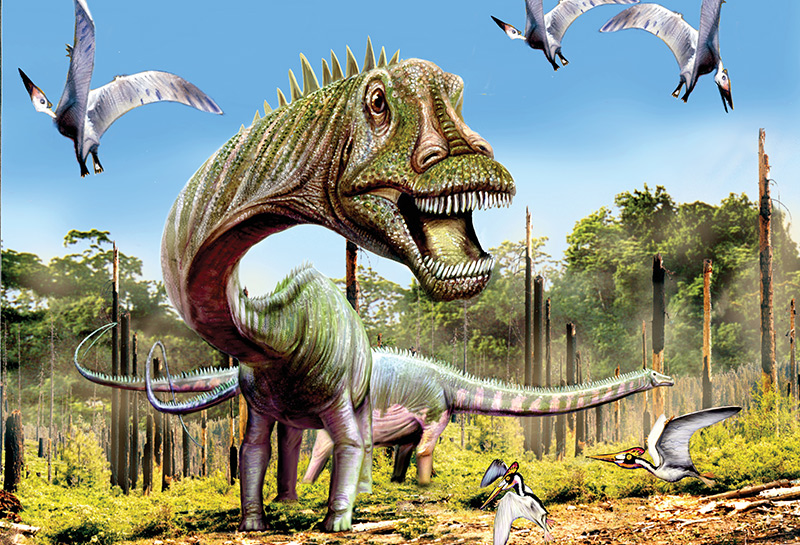
The story is reflected in their bone histology, which, like tree rings, offers a picture of the past and the rate of growth.
“Even after millions of years of fossilisation, these have preserved the microscopic structure of the bone that records key aspects of their biology.”
Studying ultra‑thin sections of bone under the microscope, Chinsamy‑Turan was the first person to deduce growth curves for dinosaurs.
So what has Africa added to the dinosaur fossil record? The answer is a variety of specimens, both large (think of the large predatory giants such as therapods stomping about the plains) and small, some embryonic.
Africa’s biggies
Africa’s biggies include the gigantic, fish‑eating Spinosaurus Aegyptiacus, remains of which have been found in Morocco. This highly adapted aquatic predator had an impressively spined and flexible tail, a five-metre “fin” unlike anything else found in dinosaurs and likely used for propulsion (a bit like a crocodile, one of the surviving remnants of dinosaurs).
Africa also has specimens of Argentinosaurus, one of the biggest land animals known, which grew to between 30 to 40 metres long and weighed up to almost 100 tonnes.
Judging from fossils found in Niger and Morocco, Africa’s really fearsome biggie appears to have been Carcharodontosaurus saharicus, commonly referred to as Africa’s Tyrannosaurus rex. One of the largest carnivores the planet has seen, it measured 13.72‑metres long and sported a handsome array of 15‑centimetre‑long serrated teeth.
“Its skull length was around 1.83 metres,” said Chinsamy-Turan. “Far more than my height.”
The continent was also home to some impressive long‑necked dinosaurs such as Brachiosaurus, a giraffe‑like herbivore that grew to heights of between 12 to 16 metres (think of a four‑storey building) and weighed in at around 22 tonnes.
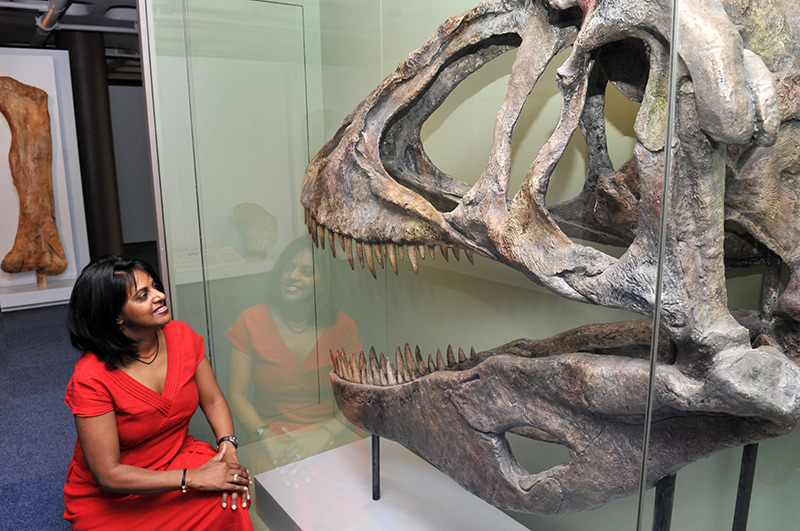
Among the early group of dinosaur fossils found in the sub‑continent is the famous long‑necked Massospondylus, an early sauropod described by Sir Richard Owen in 1854 after he found remains in South Africa. Similar fossils have also been located in Lesotho and Zimbabwe. This dinosaur was four to six metres long, bipedal and probably a herbivore, with a slender body and small head. It had a sharp thumb on each forelimb, likely for defence or feeding.
Another of Africa’s treasures is the 1.8 metre‑long Megapnosaurus, which was bipedal, narrow‑snouted and had strong hands and long fingers. In South Africa, a valuable fossil cache of these dinosaurs’ bones came to light when researchers found a bed of 30 tangled skeletons. It’s thought that the pack may have been drowned in a flash flood while out hunting.
“We always ask, how did they grow up? How long did it take to reach adulthood? And my research helps to answer these questions.”
The fossil record also includes many examples of baby dinosaurs, from embryos to hatchlings.
“We always ask, how did they grow up? How long did it take to reach adulthood?” said Chinsamy‑Turan. “And my research helps to answer these questions, telling us how the bone was actually laid down when the animal was alive and plotting the growth curve.”
She added that the fossil record indicates that these prehistoric animals also suffered from disease. One image in her presentation showed a Tyrannosaurus rex jawbone, with holes caused by a parasitic infection.
“And the cool thing is that in modern birds today, you can find the same lesions, the same holes, because of a protozoan that infects them.”
 This work is licensed under a Creative Commons Attribution-NoDerivatives 4.0 International License.
This work is licensed under a Creative Commons Attribution-NoDerivatives 4.0 International License.
Please view the republishing articles page for more information.








